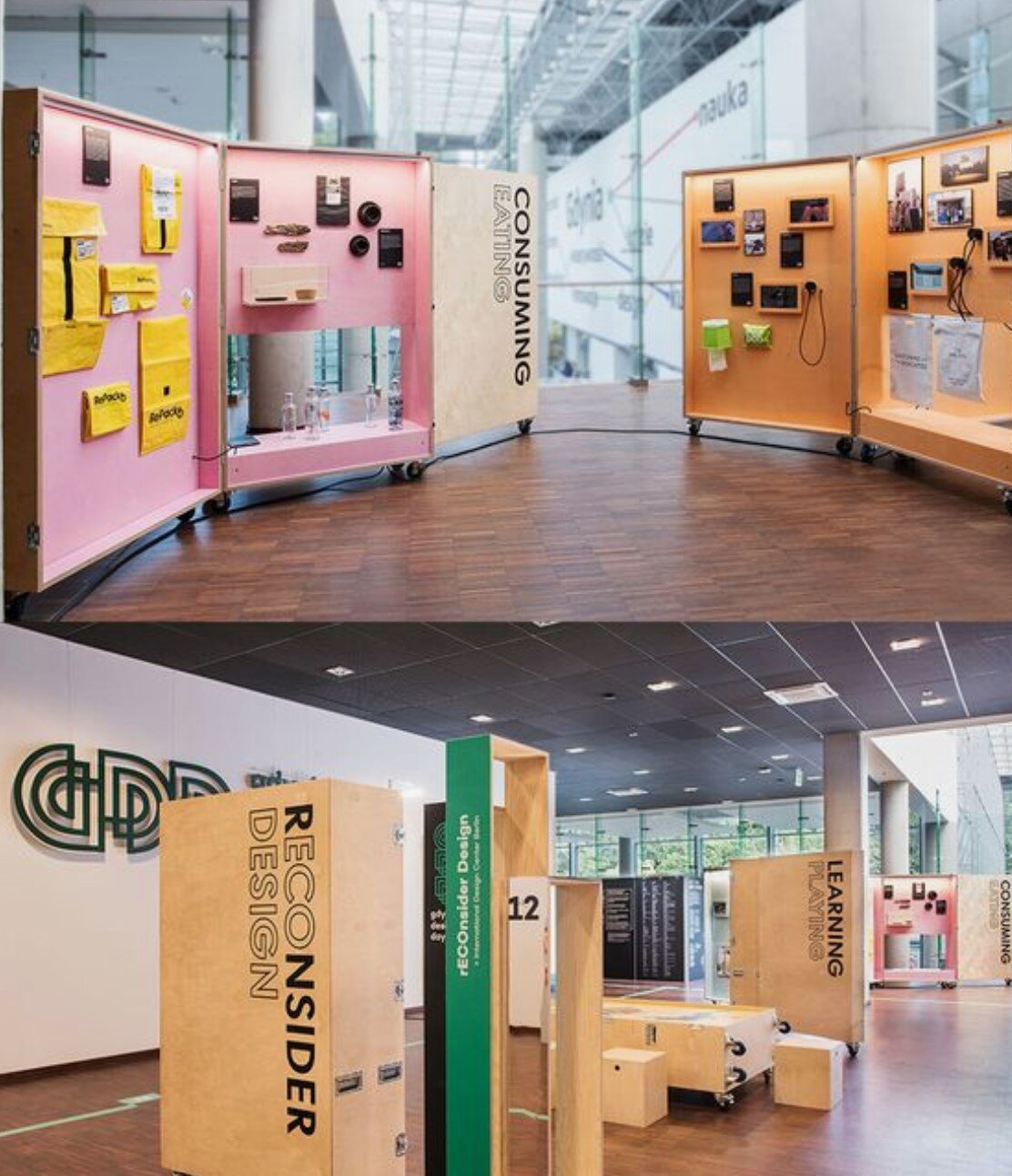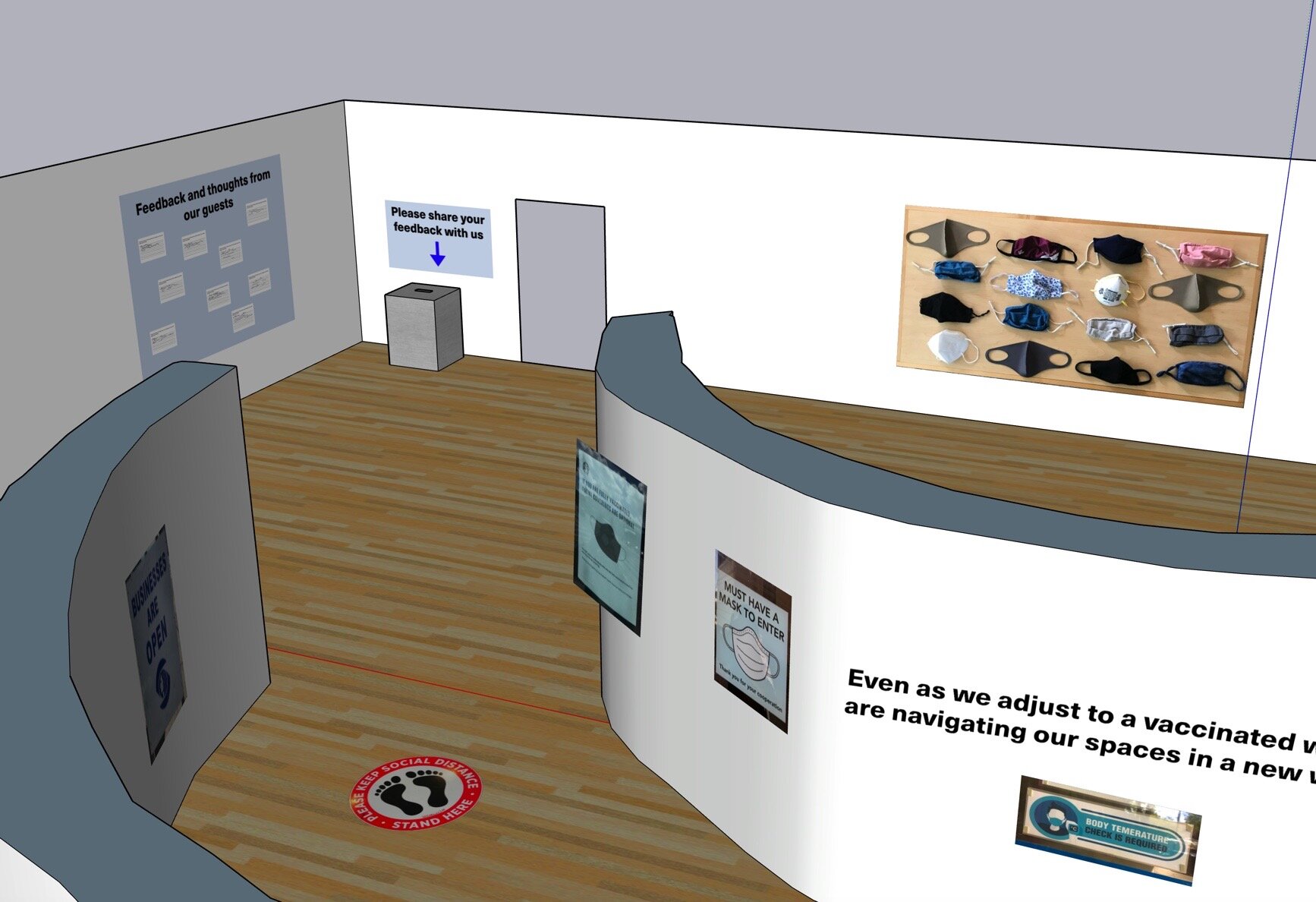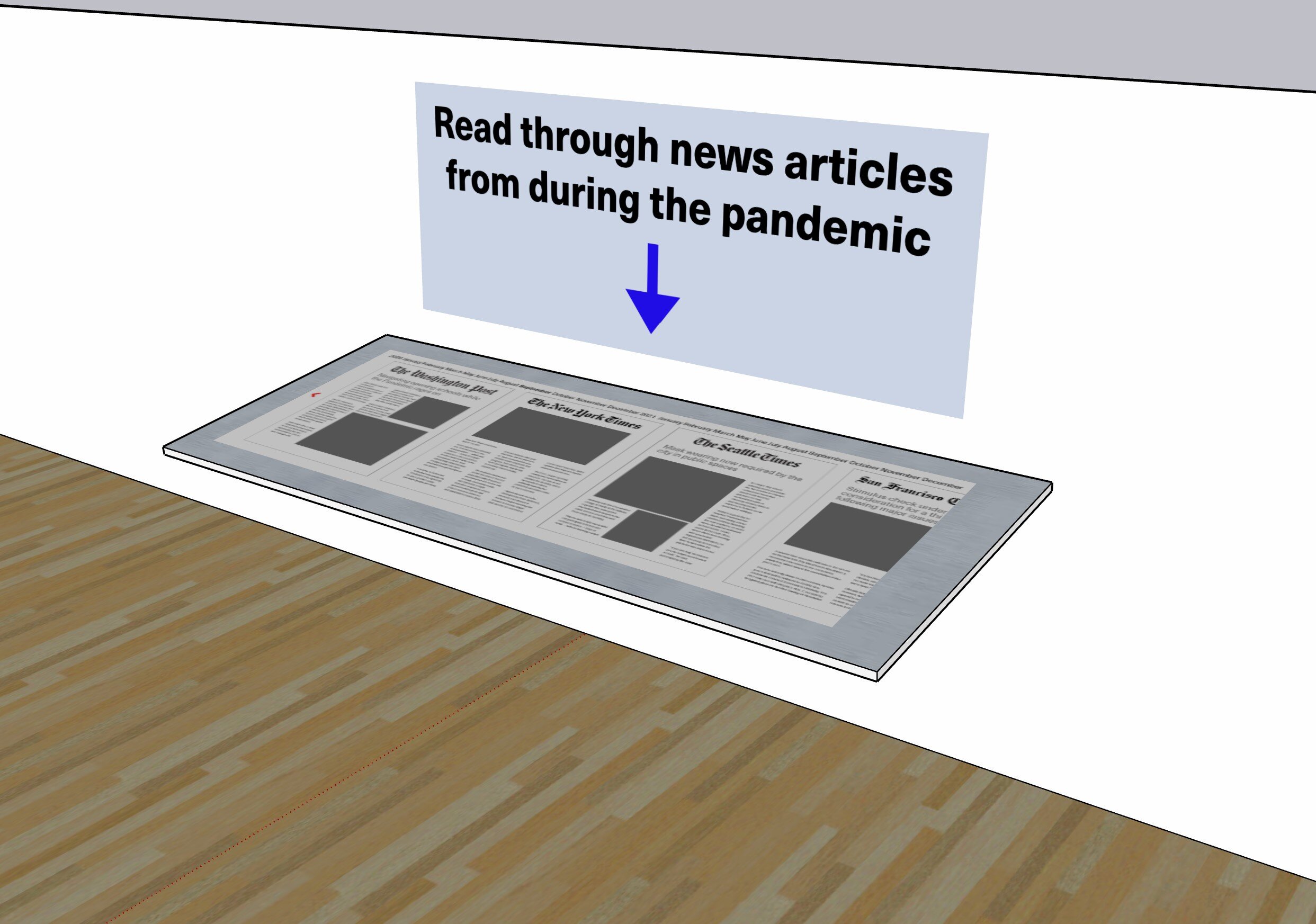Exhibition design: Pandemic Wayfinding Exhibit
Role: Designer, Illustrator, 3D designer, photographer, researcher
Tools: InDesign, Illustrator, Photoshop, Sketchup, XD
Deliverables: Wayfinding signs, 3D model
Exhibit Goal: The Pandemic Wayfinding exhibit exists to help preserve and recognize the work done during the pandemic. In order to guide us through our changed world designers helped create new wayfinding systems, as we return to normal we should remember this work and take the time to process what we have all gone through.
Context + Problem
This past year the world has been greatly impacted by the COVID-19 pandemic. We have had to redesign how we move through the world in order to try to keep ourselves and our loved ones safe. Experiences like going to the store for groceries, navigating a local small business or even visiting the zoo had to be reimagined in order to keep them open, safe, and accessible. In the face of this challenge many designers stepped up to create new wayfinding systems to help us navigate these spaces.
As we begin to reopen up and adjust to another new normal with the introduction of vaccinations for COVID-19 there is a need to recognize how we got through this past year and a half. While many are excited to move past this experience, many will need a space to process and recognize how we have worked through this time. In order to create that space there needs to be a documentation of the systems and adaptations that many designers contributed to creating. These wayfinding systems should not be forgotten as we move on collectively but many will likely fall out of use as there is no longer a need for them to keep us safe.
Solution + Outcome
The solution for this need came through the idea of a walkthrough exhibit. Included in this exhibit are a variety of interactions that provide different acknowledgements of different aspects of the pandemic. A gallery space of documented wayfinding systems is one of the key aspects of the exhibit that helps show examples of how design introduced new ways to navigate public spaces during the pandemic. Another key feature is a digital interface that allows user to scroll through news articles from the time frame during the pandemic in order to add context to the time. Additionally a timeline gives a surface level understanding of the unfolding of events and circumstances of the pandemic.
The hope for this exhibit experience is that people will find a space to safely reflect on the pandemic and acknowledge human ingenuity in a comfortable space. This exhibit will appeal to a wide variety of people, both those that experienced the pandemic and as time passes those that lack the context for what people went through. In this space people can both reflect and learn and the ultimate goal of the Pandemic Wayfinding exhibit is that the moment is a positive learning experience and a good place to process the events of the pandemic as we move out of it in the United States.
Visual Audit + Research
These images helped guide my plan for a gallery of the wayfinding designed during the pandemic.
Through research and review of other exhibits I decided I wanted my exhibit to both document wayfinding and utilize it guide visitors in a simple way. One of the key things that I decided while on while in the research stage was to use spacing dots found in pandemic wayfinding to guide visitors of my exhibit. This allows visitors to interact with these designs directly.




Exhibit Touchpoints
These touchpoints are key events from the pandemic that are represented in various aspects of the exhibit. These touchpoints are further illustrated within the initial low-fi wireframe of the layout of the exhibit.
Hear about COVID as a sickness that is not yet in the U.S.
First U.S. cases in Washington
Develop concern for interacting with people, especially strangers. Early on there are not major mitigations in stores. There are sudden shortages of cleaning products.
Stores start reducing capacity and putting up things like plexiglass barriers.
Questions about masks arise as there is a major shortage of medical grade masks.
Many people are discouraged from buying masks that could be used by the medical field.
Cloth handmade masks start being made and guidance shifts to recommending masks in crowded spaces and indoors in general.
Many “nonessential” businesses are closed and we are urged to stop the spread
Mask mandates begin in many states and many businesses have their own requirements as well.
Signage shows masks required on entry for many locations
Dots and other systems for encouraging social distancing are developed.
As some places re-open design is focused around mitigation
While some states drop mandates many private businesses continue with systems to protect their employees and prevent crowding.
Maquettes
Low-fidelity Wireframes
High-fidelity renders
These renders capture the mid stage of the project. Many of the key touch points are fully designed but later adjustments will smooth out and finalize high level visuals.






Sign flats











Interactive news screen
This interactive aspect of the exhibit allows visitors to scroll through news articles from during the pandemic and gain context before they interact with the gallery.
3D Renders of Exhibit
The interactive experience of this exhibit allows visitors to walk through a gallery of pandemic signage, explore a timeline of events, and read through news articles from during the pandemic. Visitors are invited to leave feedback about their experience at the end of their visit.









Reflection
I feel that this project went well and really pushed me to design and think in a new way as I explored a higher level of 3D design for the first time. I am happy with what I was able to achieve in Sketchup and the model that I was able to create. I personally think that the model is able to explain the mission of the exhibit in a solid conceptual way. Going forward I do hope to potentially move the model into Blender and create higher level renders. At this stage I am limited by my personal technology but having had this experience designing in three dimensions has been exciting and I hope to continue to expand my knowledge base for future projects.











